Marcia Thornton Jones's Blog, page 34
April 15, 2023
In Praise of the Paragraph!
 Pilcrow: Pilcrow symbol.
Pilcrow: Pilcrow symbol. Source at Image:Pilcrow.svg
One of the most important punctuation marks goes aboutquietly, doing its job without any notice or fanfare. It’s also the oldestof all punctuation marks, dating back to ancient Greece. It’s used a thousandtimes in every book. As Noah Lukeman (A Dash of Style: The Art and Mastery ofPunctuation, 2006) suggests, “…it alone can make or break a work.”
What is it?
The paragraph break!
As Lukeman reminds us, there is an underlying rhythm to alltext. Sentences crash and fall like thewaves of the sea. Indeed, punctuation is the music of language. And just as amelody inspires certain responses from a listener, so it goes with sentences,and by extension, punctuation. Note: I’m notspeaking of grammatically correct sentences.
“By controlling the speed of a text, punctuation dictateshow [the story] should be read.”
Once upon a time, reading was hard work. There was nopunctuation, no white-space, no lower case letters. There was nothing toindicate when one thought ended and the next one began.
The pilcrow was the first punctuation mark. The wordoriginated from the Greek paragraphos, (para=beside and graphos=towrite). This led to the Old French, paragraph. This evolvedinto pelagraphe, and then to pelegreffe. Middle Englishtransformed it into pylcrafte, and finally to pilcrow.
Around 200 AD, paragraphs were very loosely understood as achange in topic, speaker, or stanza. But there was no consistency in thesemarkings. Initially, some used the letter K, for Kaput, which isLatin for head. By the 12th century, scribes began using C,for Capitulum, Latin for little head or chapter. This C evolvedbecause of inconsistencies in handwriting. By late medieval times, the pilcrowwas a very elaborate decoration in bright red ink inserted in between shapelessparagraphs.
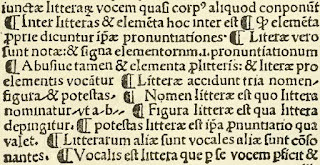 Villanova, Rudimenta Grammaticæ. Published 1500 in Valencia (Spain)..
Villanova, Rudimenta Grammaticæ. Published 1500 in Valencia (Spain).. Licensed under Public Domain
As printing technology improved, and whitespace was deemedvaluable in the reading process, pilcrows were dropped down to indicate a newline. Eventually the pilcrows were abandoned, and the paragraph indent wasborn. It wasn’t until the mid-1800s that a standard method was devised to helporganize paragraphs. Alexander Bain introduced the modern paragraph in 1866,defining it as a single unit of thought, and stressing the importance of anexplicit topic sentence.
Just as a period divides sentences, a paragraph divides groups of sentences.But as the period is often hailed as the backbone of punctuation, the paragraphbreak is largely ignored.
The primary purpose of a paragraph is to define a theme, but there are nostandard rules that dictate how that process plays out. Paragraphs tend to beorganic, subject to the writer’s idiosyncrasies.
In a perfect world, a paragraph has a beginning, the main point stated in anexplicit topic sentence. It has a middle, in which the writer elaborates onthis one main point. And it has an ending, which wraps the entire package in aneat bow.
But the world isn’t perfect. Sometimes the writer places the topic sentence asthe last line of a paragraph, playing “gotcha” like a punchline of a joke.Sometimes the topic sentence is a mere whisper, implied in the action. And thenthere’s the prankster, who places the topic sentence in the middle of aparagraph. Blink and you miss it.
Further complicating the process, there is no designatedlength that defines a paragraph. Some insist that a paragraph be fivesentences, even when the concept is so complex, it demands more explanation.They call this being succinct, but when I ask them for clarification, it takesthem several minutes to explain one sentence. I remind them, succinct does notmean short. Succinct means precise. Meanwhile, others go to the oppositeextreme. A paragraph expands across one – and sometimes more – pages. Ideas trample over each other,undistinguished from each another, in one stampeding info dump. Both of thesewriter types reflect a common issue: they don’t understand, and therefore arenot connected to, their own ideas. As Lukeman states, messy breaks reveal messythinking.
The long and short of it (and all puns intended), paragraphs affect pacing,showing the reader how to approach the text. This is especially true infiction.
Short paragraphs tend to be action-oriented, focusing on moving theplot forward. Long paragraphs slow the action down, and tend to be reflective,either setting the stage for the next chase or revealing character. Too manyshort paragraphs strung together can wear the reader out. Too many longparagraphs put readers to sleep. But with the right combination, the paragraph fades into the background, allowing the reader to experience the action.
For example, can you hear the drum beat -- illustrated by the paragraph breaks -- in this passage (as the Ninth Infantry of the Confederate Army starts marching across the cornfield in what becomes the ill-fated Pickett’s Charge) from my book, Girls of Gettysburg (Holiday House, 2014)?
Bayonets glistening in the hot sun, the wall of men stepped off the rise in perfect order. The cannoneers cheered as the soldiers moved through the artillery line, into the open fields.The line had advanced less than two hundred yards when the Federals sent shell after shall howling into their midst.
Boom! Boom! Boom!
The shells exploded, leaving holes where the earth had been. Shells pummeled the marching men. As one man fell in the front of the line, another stepped up to take his place. Smoke billowed into a curtain of white, thick and heavy as fog, stalking them across the field.
Still they marched on. They held their fire, waiting for the order.
Boom! A riderless horse, wide-eyed and bloodied, emerged from the cloud of smoke. It screamed in panic as another shell exploded.
Boom! All around lay the dead and dying. There seemed more dead than living now. Men fell legless, headless, armless, black with burns and red with blood.
Boom! They very earth shook with the terrible hellfire.
Happy [Paragraph] Writing!
-- Bobbi Miller
April 14, 2023
Staying Open to New ideas
Though I have been teaching 20 years, I amalways striving to learn new and better ways to reach my studentsacademically. This past fall I embarkedon a new journey and headed back to college to work on my math specialistdegree. Math for me has always been asubject that has been a little intimidating, so I decided to challenge myselfto learn better strategies to be a more effective teacher. Some of the classes have been online, andthough I feel I am fairly tech savvy I was totally outside of my comfort zonethe first few classes. The pandemic hadme pretty competent with zooms, but nothing prepared me for breakout rooms, jam boards, anddoing cooperative assignments in groups online. My last college degree was in person, so this dinosaur really had tolearn and grow to feel successful. Ithas been a great topic in my third-grade class for community circle though, Ilove being able to model for students that you can be a lifelong learner.
Another area I focused on this year was a building wide training toimplement a program called UFLI in my room. The students I am currently teaching were inkindergarten when schools went virtual. A lot of students are still missing some basic skills to read and decodeand this program seems to be an excellent resource for students stillstruggling. I have been working withstudents in small groups to try and implement this “new” program. It has been trial and error at times, but Ithink it is making an impact on student learning.
The great news with education is there is always room togrow at any age!

Jennifer Mitchell -- 3rd grade teacher in the Kansas City area
April 12, 2023
Staying Open by Darlene Beck Jacobson
I've always loved April. Spring, new beginnings, a chance to try new things. But just because things feel new, it doesn't always follow that new ideas will automatically arrive with the robins and daffodils.
As far as my own writing goes, I have plenty of ideas. But many of them seem to take me a few pages into a story, and then...the door closes. No matter how many times I knock on that door to creativity, it can be stubborn to open. I have two completed middle grade manuscripts that haven't found a home yet. Another WIP that is at a standstill. Forcing myself to work on a project that feels "stuck" leads to frustration and total shut down.

What's a writer to do?
The best way for me to keep open to writing is to work on other creative pursuits. I have my own blog where I post about kid-friendly activities, recipes, and great books and their authors. I read a lot of middle grade books, so I also post reviews. Discovering new authors and some amazing books helps spark my own creativity.
I recently began classes in tai chi and watercolor. Two seemingly unrelated activities, but both have an important factor in common. They require concentration and staying present in the moment in order to achieve success. I will never be a master at either pursuit. But, using my creativity in different ways has freed my mind and given it space to welcome whatever enters.
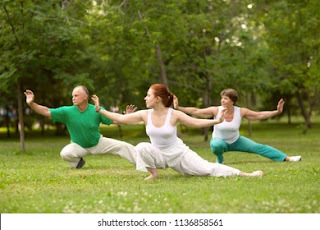
Sometimes, the muse slips in through the open door and we sit down and have a chat. Once upon a time there was a writer...

Darlene Beck Jacobson is always open to learning new things and often gets her best ideas for writing when she is doing something else.
April 11, 2023
The Myth of Writer's Block OR... Keeping Yourself Open

So. You've closed off your creative juices. You blame the dreaded Writer's Block. Tsk-tsk. Don't even.,. Because writer's block doesn't exist. Or doesn't have to. There are so many ways to open yourself up again. Here's just one.
Jody Feldman is awkwardly testing out this video thing while she's also revising her next middle grade novel. Follow her on Instagram - @jodyfeldman - for another Writer's BlockBusted!. The plan is to post once twice a month or as the spirit moves her.
April 8, 2023
BEING OPEN -- by Jane Kelley
Now that certain powerful computers can use Language Learning Models to make sentences express ideas, I've had to ponder what exactly do I do. Is writing just recombining the phrases and themes that others have used––including me? What can I do to remain vital? How can I make what I do matter?
I will continue to be Open -- with a glowing, capital O!
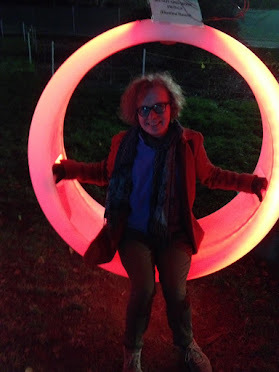
OPEN MINDED. I have opinions. Who doesn't? I believe mine are correct. Of course -- or else I wouldn't hang on to them. And yet, if I close myself off to ideas I dislike, I might miss discovering something that is worth considering. Shutting the door ends all possibility of learning something new.
OPEN HEARTED. I don't have to love everybody. But I should I care about everyone––especially those of us who can be a little difficult to like.
OPEN TO NEW IDEAS. Being curious is one of my strengths. I want to learn about anything and everything. No matter what I learn, there's often a place for it in my stories. Homing pigeons, Greek philosophers, WWI soldiers, incantation bowls, water main breaks, and yes, even robots.
OPEN FOR BUSINESS. I want to find new ways to connect with people. Communication can happen in so many different ways––songs, dance, drawing. The stories we share are what matters, not the format in which we find them.
OPEN TO ANYTHING -- like being the only adult to swing.
Jane Kelley is the author of many middle-grade novels, including THE DESPERATE ADVENTURES OF ZENO AND ALYA, which ends happily when a girl opens a window so a parrot can fly in.
April 3, 2023
How to Stay Open in Your Writing Life
 Irene LathamI spent a good chunk of 2022 in a writing funk. Things just weren't going the way I wanted or expected them to go. I found myself saying “no” A LOT. I slammed some doors, shuttered the windows. For a while I wallowed in the dark and felt utterly sorry for myself.
Irene LathamI spent a good chunk of 2022 in a writing funk. Things just weren't going the way I wanted or expected them to go. I found myself saying “no” A LOT. I slammed some doors, shuttered the windows. For a while I wallowed in the dark and felt utterly sorry for myself.I say all this to let you know that this kind of thing happens to all writers, at every stage of the game.
And the way to open again is the same, too. Here are some things that have helped me:
SERVE OTHER WRITERS.
 Last October, thanks to my writing partnership with Charles Waters, I was lucky enough to serve on the faculty for a Highlights poetry workshop. Getting out of my own head and allowing myself to share what I've learned with others, and having the opportunity to be inspired by other writers was just the jolt I needed. (Charles and I are teaching again later this month...Poetry for Kids: A World of Publishing Possibilities, with Carol Hinz and Carole Boston Weatherford. Join us!)
Last October, thanks to my writing partnership with Charles Waters, I was lucky enough to serve on the faculty for a Highlights poetry workshop. Getting out of my own head and allowing myself to share what I've learned with others, and having the opportunity to be inspired by other writers was just the jolt I needed. (Charles and I are teaching again later this month...Poetry for Kids: A World of Publishing Possibilities, with Carol Hinz and Carole Boston Weatherford. Join us!)TRY NEW THINGS.
The year I turned 50, I started a “Fifty Firsts” challenge, in which I was to try 50 new things during that year (about one a week). New dishes, new places, new books, new experiences...and I'm still doing it. I've discovered this mindset can really impact the writing life, too. For instance, I've since written my first novel for adults, which clocks in at just over 100, 000 words—two firsts for me!
TRAIN YOUR BRAIN.
One of the best habits I've picked up in the past decade is meditation. (My favorite app: Headspace.) Learning to not be too attached to my thoughts and feelings, to let them pass, to be more present is essential to a writing practice. That 2022 book was last year. That writing dream that may or may not ever come true is in the future. Right now, there's just me in my bathrobe in the early morning light tapping away in a quiet house. Here, in this moment, I can be open to whatever this blog post has to offer. I'm imagining you, whoever you are, reading these words, and I am in this conversation—open, willing, honest—which is the heart of all good writing.
You WILL get through this. The words will flow again, you will again fall in love with a story. Keep going. xo
April 2, 2023
The Blossoms of Spring
The Blossoms of Spring
One of the pleasures of lifelong residence in the Washington, D.C., areais the annual arrival of the famous cherry blossoms. This year, after arelatively mild winter with almost no snow, they appeared earlier than usual.Being a fan, I made my way over to a nearby neighborhood known for itsbounteous blossoms. Crowds of people lined the streets, craning their necksupward, posing for photos, picnicking on the grass. Neighborhood kids set up lemonadestands, hoping for customers.
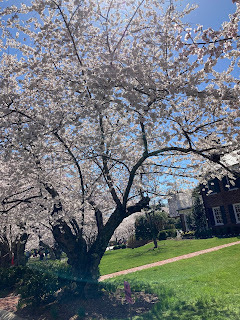 Cherry tree in bloom
Cherry tree in bloomMy own yard features a dogwood and two azaleas, still not inbloom; a small crabapple tree, festooned with pink blossoms, and a reluctant young redbud.I had hoped it would produce some amazing blooms this year, but it doesn’t seemto be doing much of anything. Maybe next year!
As for me, I’m striking off in some new directions thisspring. My first novel for adults, called Off to Join the Circus, will bepublished in July, and I’m gearing up to let people know about it (it’s availablefor pre-order on Amazon, B&N, and Bookshop.org!). It’s about an overlyenmeshed, neurotic family in the D.C. area, and what happens when a relativereturns after 64 years. I’ve been told it’s funny. J
This is a first for me, as my previous books have beenmiddle grade fiction for kids or nonfiction for adults. I’m still working onmiddle grade fiction, as well as other writing projects. Perhaps, like theredbud, they will blossom sometime in the future. For now, I’m going to enjoythe spring and look forward to the dogwood and azaleas, coming soon!
--Deborah Kalb
@font-face {font-family:Wingdings; panose-1:5 0 0 0 0 0 0 0 0 0; mso-font-charset:2; mso-generic-font-family:decorative; mso-font-pitch:variable; mso-font-signature:3 268435456 0 0 -2147483647 0;}@font-face {font-family:"Cambria Math"; panose-1:2 4 5 3 5 4 6 3 2 4; mso-font-charset:0; mso-generic-font-family:roman; mso-font-pitch:variable; mso-font-signature:3 0 0 0 1 0;}@font-face {font-family:Calibri; panose-1:2 15 5 2 2 2 4 3 2 4; mso-font-charset:0; mso-generic-font-family:swiss; mso-font-pitch:variable; mso-font-signature:-536859905 -1073732485 9 0 511 0;}p.MsoNormal, li.MsoNormal, div.MsoNormal {mso-style-unhide:no; mso-style-qformat:yes; mso-style-parent:""; margin:0in; mso-pagination:widow-orphan; font-size:16.0pt; font-family:"Times New Roman",serif; mso-fareast-font-family:Calibri; mso-fareast-theme-font:minor-latin;}.MsoChpDefault {mso-style-type:export-only; mso-default-props:yes; font-size:16.0pt; mso-ansi-font-size:16.0pt; mso-bidi-font-size:16.0pt; mso-fareast-font-family:Calibri; mso-fareast-theme-font:minor-latin;}div.WordSection1 {page:WordSection1;}
March 28, 2023
Do You Wanna Fight??
By Charlotte Bennardo
Our theme this month, thank you, Mars, god of war, is constructive fights, or surprising confrontations with students. I haven't taught in a classroom in... uh, years. So I'll focus on constructive fights in publishing- between editors and authors (which is always a learning experience).
 Photo by Mikhail Nilov: https://www.pexels.com/photo/stressed...
Photo by Mikhail Nilov: https://www.pexels.com/photo/stressed...I have never heard of a manuscript being accepted as is; no changes or edits necessary, they love it! There are ALWAYS changes they want the author to make. Some of those changes (having been through the process), have you saying, sure, I can make them, no problem!
But then... there are THOSE changes that just... kill you. They don't fit with your vision, or they change so much of the novel or you simply hate them. This is when you may have both a constructive fight and a surprising confrontation. As an author, you have to fight for the integrity of your novel (hey, it's YOUR STORY) but they are the ones putting money into publishing it, so they have a stake too. It should be a constructive 'fight' when you calmly discuss the proposed changes and your justification for not making some changes or modifying them. This may be where there is a surprise confrontation if the editor digs down, insisting on certain changes. At this point, the author has to decide which is more important; making the changes and ensuring the book gets published or declining the changes and taking a chance that the editor will pass on publishing the book.
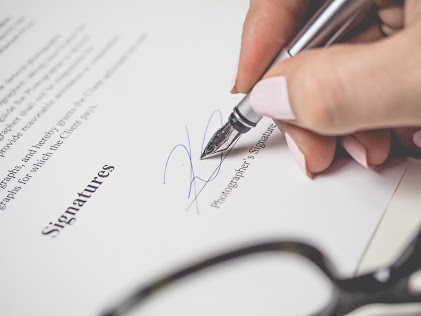 Photo by energepic.com: https://www.pexels.com/photo/person-h...
Photo by energepic.com: https://www.pexels.com/photo/person-h...Fighting and confrontation can be constructive if respectful and thoughtful. Don't be afraid of it, but embrace it.
Charlotte writes MG, YA, NA, and adult novels in sci fi, fantasy, contemporary, and paranormal genres. She is the author of the award-winning middle grade Evolution Revolution trilogy, Simple Machines, Simple Plans, and Simple Lessons. She co-authored the YA novels Blonde OPS, Sirenz, and Sirenz Back in Fashion. She has two short stories in the Beware the Little White Rabbit (Alice through the Wormhole) and Scare Me to Sleep (Faces in the Wood) anthologies. Currently she is working on several novels for both children and adults, and her MFA. She lives in NJ with her family and her floofy cat. When they trimmed the backyard tree, the crazy squirrel couple had to move out.
March 25, 2023
How to Handle Editorial Letters (Holly Schindler)
 I've heard authors admit they fear editorial letters. We're talking about professional, already-published authors. They're afraid they're going to be asked to do something they don't know how to do.
I've heard authors admit they fear editorial letters. We're talking about professional, already-published authors. They're afraid they're going to be asked to do something they don't know how to do. Me?
My experience with the editorial letter is kind of a bumbling, stumbling one. I sold my first book myself, years ago, with no agents to tell me what I should expect about the development process. I discussed the book on the phone with an acquisitions editor--to show my openness to his suggestions, I went ahead and revised the scenes we'd discussed and sent it along before the acquisitions meeting.
There was no editorial letter. Not one that addressed global issues. It went straight to line editing after it was acquired.
With book 2, I was promised, "Your editorial letter is coming soon." And I thought, "What in the world is that? We didn't do that last time."
Anyway, I got the notes for book 2 and I dug in. At one point, my editor said something to the effect of, "You need to get rid of the cat. Every time the cat shows up, the book slows down."
This boggled my mind. How could a cat slow a book down?
I tracked the name of the cat throughout the manuscript. Turned out, the cat (owned by the MC for most of her life--this was a YA novel) triggered a flashback.
So, the editor was right. It did slow down every time the cat showed up. It was really smart to identify that. But the cat wasn't itself slowing the book down. If I'd done what the editor literally wanted me to do (remove the cat), the slowness would have still been there.
So I kept the cat. Cut the flashbacks.
This month, we're all writing about constructive fights--sometimes, though, if you think about it, you don't need to fight at all. We're all on the same team, trying to get to the same place.
That's how I think of editorial letters--as a collaboration.
~
Holly Schindler is the author of books for readers of all ages. Playing Hurt, originally published as a YA (now book 1 in a YA / adult romance crossover series) still features a cat named Scratches.
March 23, 2023
Big to Small and Back Again: Smack Dab in the Imagination by Dia Calhoun
Last week at Arch Cape on the Oregon Coast, I wrote in the daze of big ocean view. Waves crashed the broken headland just to the south. The house deck had bollards in front to protect the house from logs in storms and high surf.
I'm used to writing by water. Back home, the Nisqually river, glacier fed from Mt. Rainer, runs thirty feet below my back yard. Although it's a big river and can run fierce and high, it's also an intimate, close-in setting compared to the ocean.
The dizzying shifting of my imagination between the big picture and the small informed all of my writing at the ocean. You know how it is. You are walking on the beach, looking out at that vast blue-on-blue of sky and wave, then suddenly you zoom in on a broken white shell or an odd, rust-red rock at your feet. Then out again. I tossed that shifting into my rough writing drafts and loved the juxtaposition effects. I'd like to try this with dialogue between two characters.
If you do, let me know what happens.



